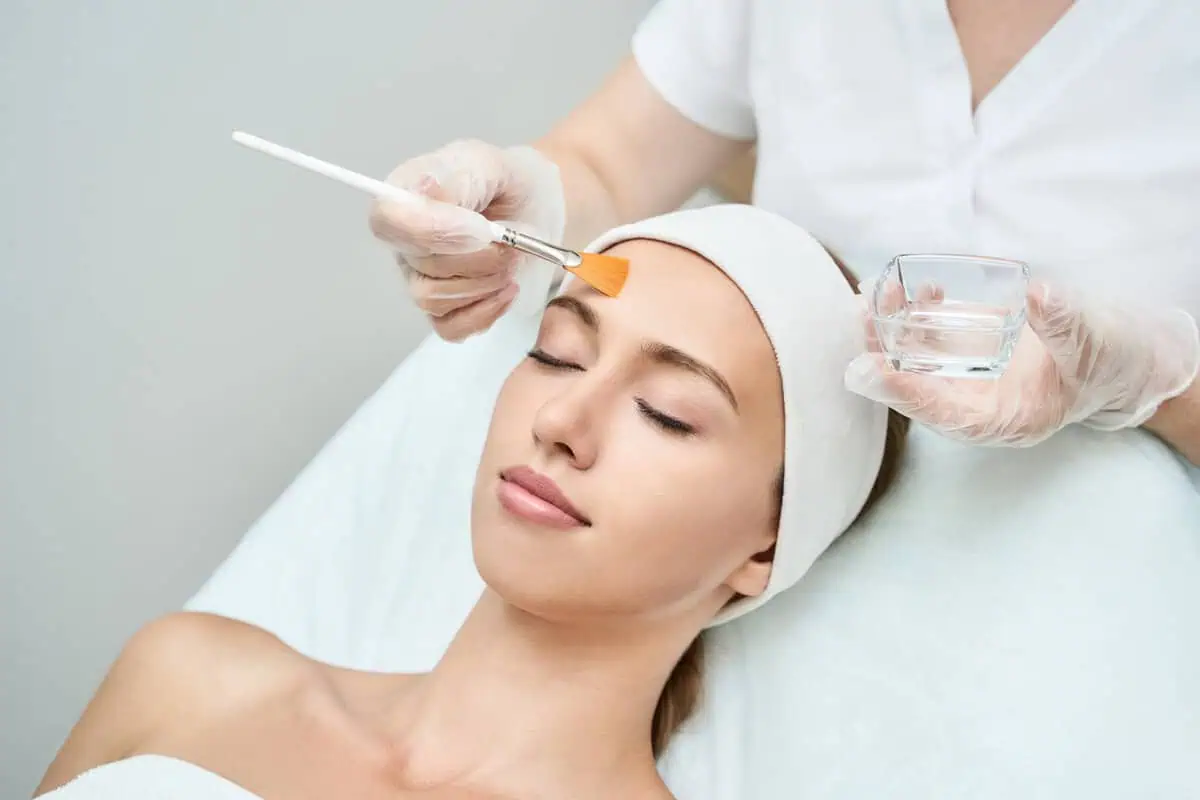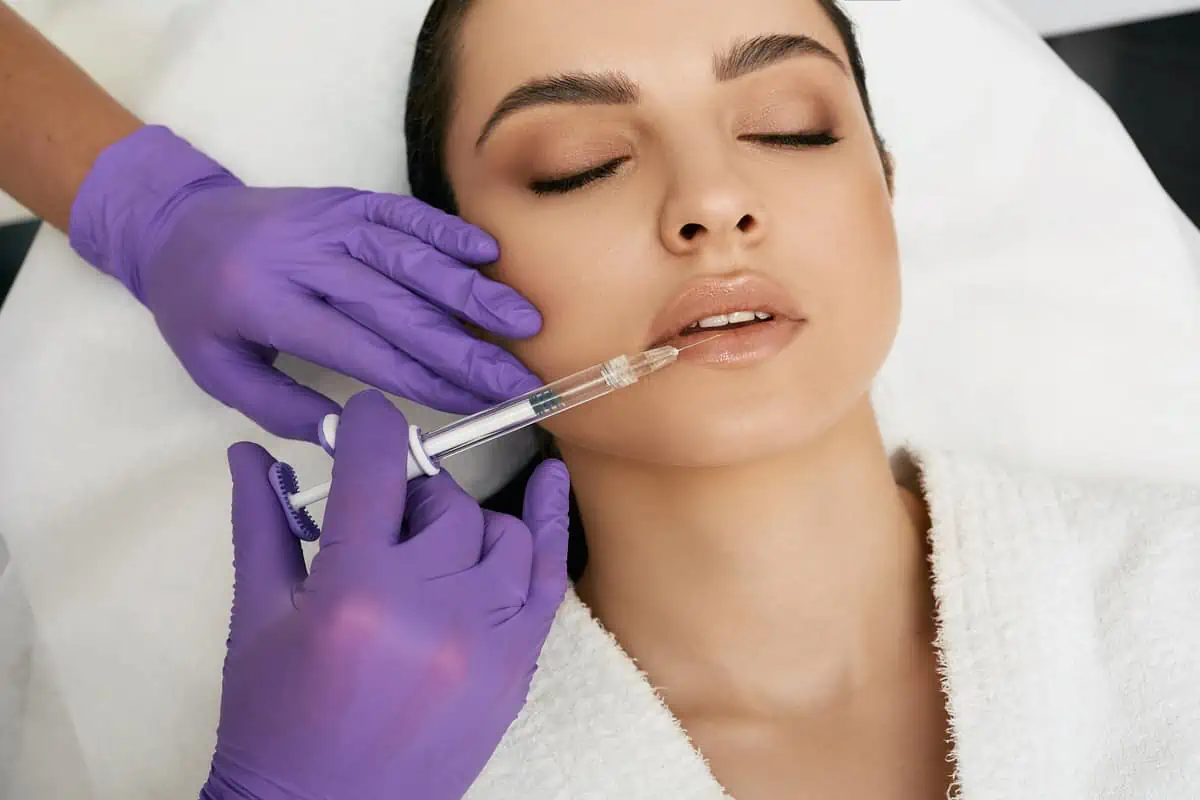
What are fillers?
Fillers, in the context of aesthetics and cosmetic procedures, refer to substances injected into the skin to add volume, fill wrinkles or lines, and enhance facial contours. They are commonly used for facial rejuvenation, addressing signs of aging, and achieving a more youthful and radiating appearance. They basically add fullness and volume to the skin.
Fillers are typically made of different materials, with the most common types being hyaluronic acid (HA) fillers and collagen-stimulating fillers.
- Hyaluronic acid fillers: Hyaluronic acid is a naturally occurring substance found in the body that provides hydration and plumpness to the skin. HA fillers are gel-like substances injected into areas of the face to restore volume, fill in wrinkles and folds, and enhance facial features. They are temporary fillers as the body gradually breaks down the hyaluronic acid. Common brand names of HA fillers include Juvéderm, Restylane, and Belotero.
- Collagen-stimulating fillers: These fillers stimulate collagen production, providing skin structure and firmness. By promoting collagen synthesis, these fillers can help improve skin texture, reduce wrinkles, and restore volume. Unlike HA fillers, collagen-stimulating fillers can have longer-lasting effects, as the new collagen provides structural support even after metabolizing the filler material. Sculptra is an example of a collagen-stimulating filler.
Are fillers used for everyone?
Fillers are only sometimes used for some. While they are a popular cosmetic treatment, using fillers depends on individual factors and goals. Here are some considerations:
- Eligibility: Individuals who are in good overall health and have realistic expectations for the procedure’s outcome may be suitable candidates for fillers. However, certain medical conditions, allergies, or contraindications could make someone ineligible for filler treatments.
- Age considerations: Fillers are often used by individuals seeking to address signs of aging, such as wrinkles, lines, and volume loss. However, there is no specific age requirement for fillers. The decision to use fillers depends on an individual’s unique concerns, skin condition, and desired outcome. Some younger individuals may opt for fillers to enhance facial features or address specific concerns, while older individuals may seek to restore volume and rejuvenate their appearance.
- Treatment goals: Fillers are versatile and can be used to address various aesthetic concerns, such as adding volume to the lips, filling in wrinkles or folds, enhancing cheekbones, or improving the contour of the face. If you have specific concerns or desires about facial appearance, fillers may be worth considering. However, it’s essential to understand what can realistically be achieved with fillers.
- Individual preferences: Ultimately, the decision to use fillers is personal. Some individuals may be comfortable with the natural aging process and choose not to undergo cosmetic treatments. Others may prefer to explore non-surgical options like fillers to enhance their appearance. Making decisions based on your values, preferences, and comfort level is essential.
- Allergies and sensitivities: Some individuals may have allergies or sensitivities to certain filler materials. For example, if you have a known allergy to hyaluronic acid or any other filler component, it may not suit you. Before considering filler treatments, it’s crucial to inform your healthcare provider about any allergies or previous adverse reactions.
Can fillers be used with other treatments?
Yes, fillers can be combined with other aesthetic treatments to achieve complete results. Combining different therapies can provide a more tailored approach to address multiple concerns and enhance facial rejuvenation. Here are a few examples of how fillers can be used in conjunction with other treatments:
- Botox: Botox (Botulinum toxin) is a popular treatment for reducing wrinkles and fine lines by temporarily relaxing the underlying muscles. Botox is commonly used in areas like the forehead, between the eyebrows (glabellar lines), and around the eyes (crow’s feet). Fillers can be used alongside Botox to address static wrinkles (wrinkles that are present even without muscle movement), add volume, and restore facial harmony. Combining Botox and fillers can provide a more comprehensive rejuvenation effect.
- Chemical peels: Chemical peels involve the application of a chemical solution to exfoliate the skin and promote cell turnover, resulting in a smoother and more even complexion. They can address fine lines, uneven pigmentation, and superficial acne scars. Combining fillers with chemical peels can enhance rejuvenation by addressing textural and volume-related concerns.
- Laser or light-based treatments: Procedures like laser resurfacing, intense pulsed light (IPL), or fractional laser treatments can improve skin texture, reduce pigmentation irregularities, and stimulate collagen production. These treatments primarily focus on skin quality and can be used with fillers to address volume loss and aging-related structural changes. The laser treatment can improve the overall skin appearance, while fillers can restore lost volume and enhance facial contours.
- Thread lifts: This procedure involves inserting dissolvable threads under the skin to lift sagging facial tissues and promote collagen production. Thread lifts can provide subtle lift and tightening effects. Fillers can be used alongside thread lifts to add volume and enhance results. This combination approach can achieve a more comprehensive facial rejuvenation.
How long do results from fillers last?
The longevity of filler results depends on the type of filler administered and the individual’s metabolism and skin condition. Moreover, the effects from hyaluronic acid last for several months, while results from poly-L-lactic acid fillers last up to two years.
What areas do fillers treat?
Fillers can treat various face areas, enhancing volume, wrinkles, and contouring. Here are some familiar places that fillers can address:
- Nasolabial folds: These deep lines or folds extend from the nose sides to the corners of the mouth. Fillers can be injected into this area to soften the folds and restore volume.
- Marionette lines: Marionette lines are the vertical lines extending downward from the mouth’s corners. Fillers can help minimize the appearance of these lines and improve the overall contour of the lower face.
- Lips: Fillers are frequently used to enhance the lips by adding volume and improving their shape and definition. They can provide a fuller and more balanced appearance to the lips.
- Cheeks: Aging can cause volume loss in the cheeks, leading to a flattened or sunken appearance. Fillers can restore volume and lift the cheeks, creating a more youthful contour.
- Fine lines and wrinkles: Fillers can minimize the appearance of fine lines and wrinkles in various areas of the face, such as the forehead, around the eyes, and the mouth.
- Jawline and chin: Fillers can contour and define the jawline and chin. They can add structure and balance to the lower face, creating a more defined and harmonious appearance.
- Tear troughs: The tear trough area is between the lower eyelid and the upper cheek. It can develop a hollow or sunken appearance, contributing to dark under-eye circles and a tired look. Fillers can be injected into this area to fill in the hollows and improve the overall smoothness of the under-eye area.
- Temples: Volume loss in the temples can contribute to a hollow or sunken appearance in the upper face. Fillers are used to restore volume in this area, improving facial symmetry and rejuvenating the overall appearance.
Administering fillers should be handled with care and professionalism. Get your fillers done at La Lumiere Esthetique and contact them now to reserve a spot.




